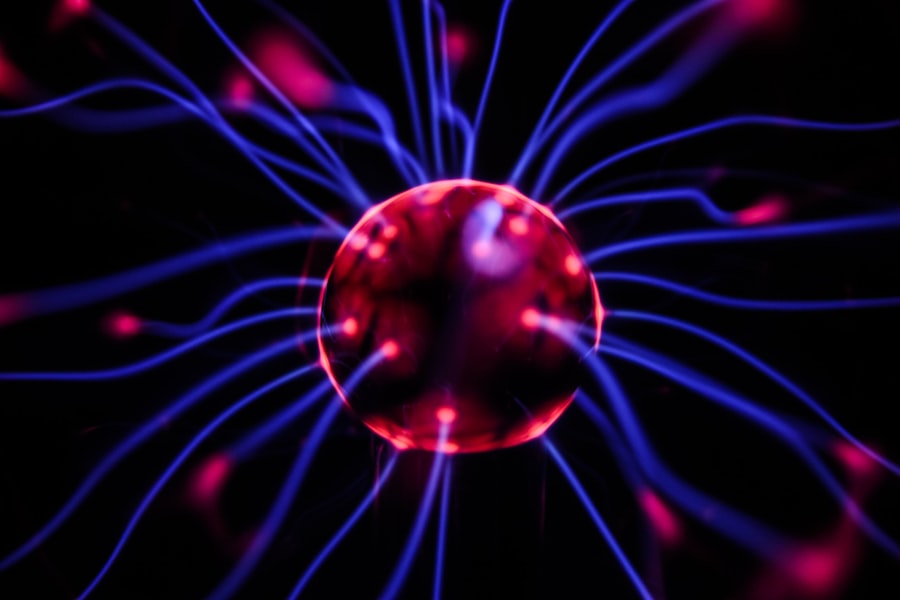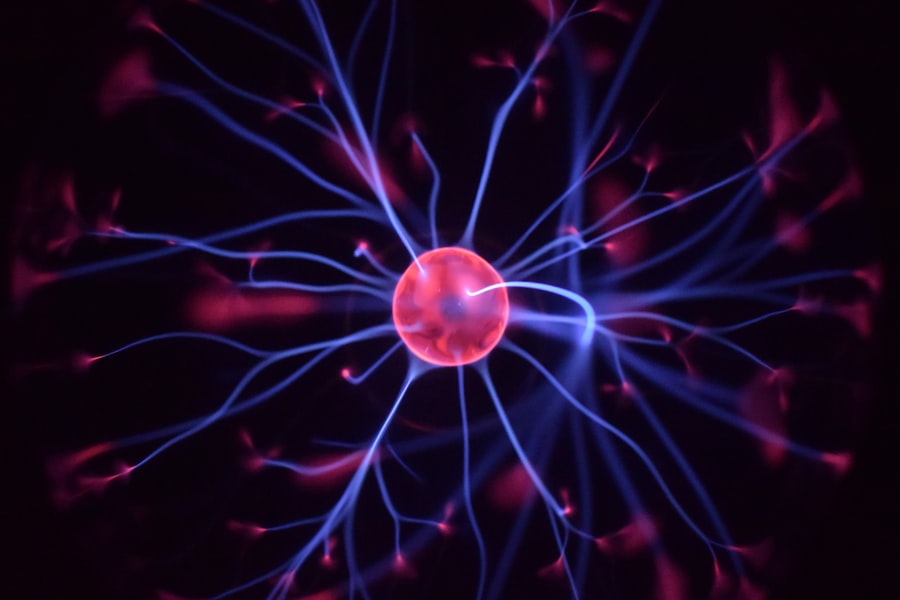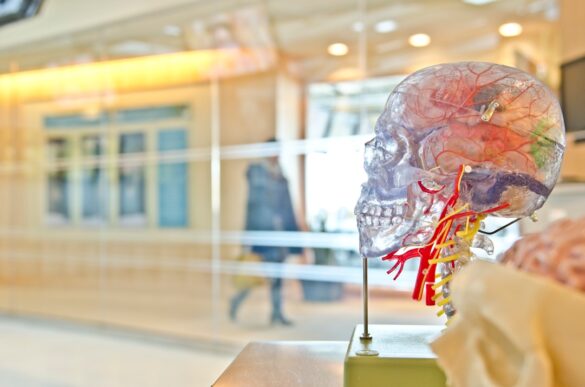Bipolar disorder, previously known as manic-depressive illness, is a complex mental health condition characterized by extreme mood swings that include emotional highs (mania or hypomania) and lows (depression). These mood fluctuations can significantly impact an individual’s daily life, affecting their relationships, work performance, and overall quality of life. The disorder is not merely a series of mood swings; it is a chronic condition that requires ongoing management and understanding.
The severity and frequency of these episodes can vary widely among individuals, making bipolar disorder a highly individualized experience. The exact cause of bipolar disorder remains elusive, but it is believed to result from a combination of genetic, biochemical, and environmental factors. Research indicates that individuals with a family history of bipolar disorder are at a higher risk of developing the condition themselves.
Neurotransmitters, the brain’s chemical messengers, also play a crucial role in mood regulation, and imbalances in these chemicals may contribute to the onset of bipolar episodes. Understanding the multifaceted nature of this disorder is essential for effective treatment and support. Check out the latest health tips and information at Lifemedicallab.
Key Takeaways
- Bipolar disorder is a mental health condition characterized by extreme mood swings, including manic episodes and depressive episodes.
- There are several types of bipolar disorder, including bipolar I, bipolar II, and cyclothymic disorder, each with its own unique symptoms and severity.
- Symptoms of bipolar disorder can include intense mood swings, changes in energy and activity levels, and difficulty with concentration and decision-making.
- Manic episodes in bipolar disorder may involve symptoms such as increased energy, racing thoughts, and risky behavior, while depressive episodes may include feelings of sadness, hopelessness, and loss of interest in activities.
- It is important to understand that bipolar disorder can also affect children and adolescents, and early diagnosis and intervention are crucial for managing the condition effectively.
Types of Bipolar Disorder
Bipolar disorder is classified into several types, each defined by the pattern and severity of mood episodes experienced. The most recognized forms include Bipolar I, Bipolar II, and Cyclothymic Disorder. Bipolar I is characterized by at least one manic episode that lasts for a week or more, often accompanied by depressive episodes.
The manic episodes in Bipolar I can be severe enough to require hospitalization or may lead to psychotic symptoms, such as hallucinations or delusions. Bipolar II disorder involves a pattern of depressive episodes and hypomanic episodes, which are less severe than full-blown manic episodes. Individuals with Bipolar II may experience significant impairment in their daily functioning due to the depressive phases, even though they do not experience the extreme highs associated with Bipolar
Symptoms of Bipolar Disorder

The symptoms of bipolar disorder can be broadly categorized into manic and depressive episodes, each presenting distinct characteristics. During manic episodes, individuals may exhibit heightened energy levels, increased talkativeness, racing thoughts, and an inflated sense of self-esteem or grandiosity.
They may engage in risky behaviors, such as excessive spending or reckless driving, often without considering the potential consequences.
This phase can lead to significant disruptions in personal and professional life due to impulsive decision-making. Conversely, depressive episodes are marked by feelings of sadness, hopelessness, and a lack of interest or pleasure in activities once enjoyed.
Individuals may experience changes in appetite or sleep patterns, fatigue, difficulty concentrating, and even thoughts of self-harm or suicide. The contrast between these two states can be stark; someone who has just experienced a manic episode may find themselves plunged into a deep depression shortly thereafter. This cyclical nature of mood changes can create confusion and distress for both the individual and their loved ones.
Manic Episodes: Signs and Symptoms
| Signs and Symptoms | Description |
|---|---|
| Increased energy | Feeling extremely energized or agitated |
| Decreased need for sleep | Feeling rested after only a few hours of sleep |
| Rapid speech | Talking quickly and jumping between topics |
| Racing thoughts | Having multiple thoughts at once, making it hard to concentrate |
| Impulsive behavior | Engaging in risky behaviors without considering consequences |
Manic episodes are a hallmark feature of bipolar disorder and can manifest in various ways. One of the most prominent signs is an elevated mood that may be described as euphoric or excessively irritable. Individuals may feel an overwhelming sense of energy and invincibility, leading them to take on multiple projects or engage in activities that they would typically avoid.
This heightened state can also result in decreased need for sleep; individuals may feel rested after only a few hours of sleep or even go days without rest. In addition to increased energy levels, individuals experiencing a manic episode often display rapid speech patterns and racing thoughts. They may jump from one topic to another during conversations, making it challenging for others to follow their train of thought.
Impulsivity is another critical symptom; individuals may engage in reckless behaviors such as substance abuse, unprotected sex, or extravagant spending sprees without considering the potential repercussions.
These manic episodes can last for days, weeks, or even longer if left untreated, leading to significant disruptions in various aspects of life.
Depressive Episodes: Signs and Symptoms
Depressive episodes in bipolar disorder can be profoundly debilitating and often overshadow the manic phases. During these periods, individuals may experience pervasive feelings of sadness or emptiness that seem insurmountable. A marked loss of interest in activities that once brought joy is common; hobbies, social interactions, and even daily responsibilities may feel overwhelming or pointless.
This emotional numbness can lead to isolation as individuals withdraw from friends and family. Physical symptoms often accompany depressive episodes as well. Changes in appetite may result in significant weight loss or gain, while sleep disturbances can manifest as insomnia or hypersomnia (excessive sleeping).
Fatigue is prevalent; even simple tasks can feel exhausting. Cognitive functions may also be impaired; individuals might struggle with concentration, memory recall, or decision-making. In severe cases, thoughts of self-harm or suicide may arise, necessitating immediate intervention and support from mental health professionals.
Understanding Bipolar Disorder in Children and Adolescents

Bipolar disorder is not limited to adults; it can also manifest in children and adolescents, although diagnosing it in younger populations presents unique challenges. The symptoms may differ from those seen in adults; for instance, children may exhibit more irritability than euphoria during manic episodes. Additionally, mood swings can occur more frequently and may be shorter in duration compared to adult presentations.
This variability can complicate the diagnostic process as it may be mistaken for typical developmental changes or other behavioral disorders. Early identification and intervention are crucial for managing bipolar disorder in young people. Untreated bipolar disorder can lead to academic difficulties, strained relationships with peers and family members, and an increased risk of substance abuse.
Parents and caregivers should be vigilant for signs such as extreme mood changes that last for several days or weeks, significant changes in behavior or energy levels, and any indications of self-harm or suicidal thoughts. A comprehensive evaluation by a mental health professional specializing in pediatric psychiatry is essential for accurate diagnosis and effective treatment planning.
Diagnosing Bipolar Disorder
Diagnosing bipolar disorder involves a thorough assessment by a qualified mental health professional who will consider various factors including medical history, symptom patterns, and family history of mood disorders. There is no single test for bipolar disorder; instead, clinicians rely on structured interviews and standardized assessment tools to evaluate the presence and severity of symptoms. The Diagnostic and Statistical Manual of Mental Disorders (DSM-5) outlines specific criteria that must be met for a diagnosis.
A comprehensive evaluation typically includes discussions about the individual’s mood history, any previous episodes of mania or depression, and how these episodes have impacted their daily life. It is also essential to rule out other mental health conditions that may present with similar symptoms, such as major depressive disorder or anxiety disorders. In some cases, physical health issues or substance use may mimic or exacerbate bipolar symptoms; therefore, a complete medical evaluation is often necessary to ensure an accurate diagnosis.
Treatment Options for Bipolar Disorder
Effective management of bipolar disorder typically involves a combination of medication, therapy, lifestyle changes, and support systems tailored to the individual’s needs. Treatment plans are often personalized based on the type of bipolar disorder diagnosed and the specific symptoms experienced by the individual. A collaborative approach involving healthcare providers, patients, and their families is essential for achieving optimal outcomes.
Medications play a central role in stabilizing mood fluctuations associated with bipolar disorder. Mood stabilizers are commonly prescribed to help prevent both manic and depressive episodes. Antipsychotic medications may also be utilized during acute manic phases or when psychotic symptoms are present.
Additionally, antidepressants may be prescribed cautiously during depressive episodes but must be monitored closely due to the risk of triggering manic episodes in some individuals.
Medications for Bipolar Disorder
The pharmacological treatment landscape for bipolar disorder includes several classes of medications designed to stabilize mood and manage symptoms effectively. Mood stabilizers such as lithium have long been considered the gold standard for treating bipolar disorder due to their efficacy in reducing the frequency and severity of mood episodes. Regular monitoring of blood levels is necessary when using lithium to avoid toxicity.
Anticonvulsants like valproate (Depakote) and lamotrigine (Lamictal) have also gained prominence as mood stabilizers due to their effectiveness in managing both manic and depressive episodes. Atypical antipsychotics such as quetiapine (Seroquel) and aripiprazole (Abilify) are frequently used to address acute mania or mixed episodes while providing mood stabilization over time. Each medication comes with its own set of potential side effects; therefore, ongoing communication between patients and healthcare providers is vital for adjusting treatment plans as needed.
Therapy and Counseling for Bipolar Disorder
In addition to medication management, therapy plays a crucial role in treating bipolar disorder by providing individuals with coping strategies and tools to manage their condition effectively. Cognitive-behavioral therapy (CBT) is particularly beneficial as it helps individuals identify negative thought patterns that contribute to mood swings while promoting healthier coping mechanisms. Through CBT, patients learn how to challenge irrational beliefs associated with their moods and develop practical skills for managing stressors.
Interpersonal therapy (IPT) focuses on improving interpersonal relationships and social functioning by addressing issues such as communication difficulties or unresolved conflicts that may exacerbate mood symptoms. Family-focused therapy involves educating family members about bipolar disorder while fostering open communication within the family unit to create a supportive environment for the individual affected by the condition. These therapeutic approaches can enhance overall treatment outcomes by promoting understanding and reducing stigma surrounding bipolar disorder.
Lifestyle Changes and Coping Strategies for Bipolar Disorder
Incorporating lifestyle changes can significantly enhance the management of bipolar disorder alongside traditional treatment methods. Regular physical activity has been shown to improve mood stability by releasing endorphins that promote feelings of well-being. Establishing a consistent sleep routine is equally important; sleep disturbances can trigger mood episodes, so prioritizing adequate rest is essential for maintaining emotional balance.
Mindfulness practices such as meditation or yoga can help individuals develop greater awareness of their thoughts and emotions while reducing stress levels. Engaging in creative outlets like art or music can also serve as therapeutic tools for self-expression during challenging times. Building a strong support network consisting of friends, family members, or support groups provides additional emotional resources that can help individuals navigate the complexities of living with bipolar disorder effectively.
By understanding the intricacies of bipolar disorder—from its definition to its treatment options—individuals affected by this condition can better advocate for themselves while fostering resilience through informed choices about their mental health journey.
If you or a loved one is struggling with a mental disorder disease, it may be beneficial to seek out expert support through local teen therapy. Finding a therapist who specializes in treating adolescents can make a significant difference in managing symptoms and improving overall mental health. Additionally, considering an intensive outpatient program for mental health may provide the necessary level of care and support needed for recovery. Conducting a mental health status exam can also help in assessing the current state of one’s mental well-being and determining the most appropriate course of treatment. For more information on these topics, visit this article.
FAQs
What is a mental disorder disease?
A mental disorder disease, also known as a mental illness, is a condition that affects a person’s thinking, feeling, behavior, or mood. These conditions can impact a person’s ability to function in their daily life and can vary in severity.
What are some common types of mental disorder diseases?
Some common types of mental disorder diseases include anxiety disorders, mood disorders (such as depression and bipolar disorder), schizophrenia, eating disorders, and personality disorders.
What are the causes of mental disorder diseases?
The causes of mental disorder diseases are complex and can involve a combination of genetic, biological, environmental, and psychological factors. Trauma, stress, and a family history of mental illness can also contribute to the development of these conditions.
How are mental disorder diseases diagnosed?
Mental disorder diseases are typically diagnosed through a comprehensive evaluation by a mental health professional, such as a psychiatrist or psychologist. This evaluation may include a physical exam, a review of symptoms, and a discussion of personal and family medical history.
What are the treatment options for mental disorder diseases?
Treatment for mental disorder diseases can include a combination of medication, psychotherapy, and support services. In some cases, hospitalization or residential treatment may be necessary. It’s important for individuals to work with a mental health professional to develop a personalized treatment plan.
Can mental disorder diseases be prevented?
While it may not be possible to prevent all mental disorder diseases, there are steps that individuals can take to promote good mental health, such as maintaining a healthy lifestyle, seeking support when needed, and managing stress. Early intervention and treatment can also help prevent the worsening of symptoms.

